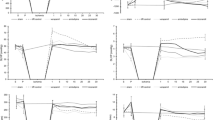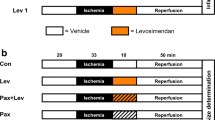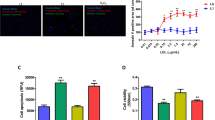Abstract
ATP-sensitive potassium channels (KATP channels) regulate vascular tone and cardiac contraction through their action on the membrane potential of smooth muscle cells and cardiomyocytes. Because aging and diseases alter KATP channel activity, many pharmacological treatments aimed at improving their function, therefore cardiovascular function, have been evaluated. Nicorandil, a KATP channel opener, nitric oxide donor and antioxidant, is used as a treatment of angina pectoris and induces vasodilation, blood pressure decrease and cardioprotection in aging as well as after ischemia-reperfusion. Here, using the patch-clamp technique, we have studied the effect a chronic low dose of nicorandil (0.1 mg/kg per day for 2 months), on the activity of cardiomyocyte KATP channels as a function of age, in newborn, 4-, 12- and 24-month old rats. Nicorandil exerted an anti-oxidant and protective action on cardiomyocyte KATP channels, especially in aged animals, leading to restoration of a normal channel activity. These findings could justify further therapeutical applications.






Similar content being viewed by others
References
Anversa P, Palackal T, Sonnenblick EH, Olivetti G, Meggs LG, Capasso JM (1990) Myocyte cell loss and myocyte cellular hyperplasia in the hypertrophied aging rat heart. Circ Res 67:871–885
Bernhard D, Laufer G (2008) The aging cardiomyocyte: a mini-review. Gerontology 54:24–31. doi:10.1159/000113503
Besse S, Bulteau AL, Boucher F, Riou B, Swynghedauw B, de Leiris J (2006) Antioxidant treatment prevents cardiac protein oxidation after ischemia-reperfusion and improves myocardial function and coronary perfusion in senescent hearts. J Physiol Pharmacol 57:541–552
Bishop SP, Dillon D, Naftilan, Reynolds R (1980) Surface morphology of isolated cardiac myocytes from hypertrophied hearts of aging spontaneously hypertensive rats. Scan Electron Microsc (Pt 2):193–199
Chen F, Wetzel GT, Friedman WF, Klitzner TS (1992) ATP-sensitive potassium channels in neonatal and adult rabbit ventricular myocytes. Pediatr Res 32:230–235. doi:10.1203/00006450-199208000-00021
Coetzee WA, Nakamura TY, Faivre JF (1995) Effects of thiol-modifying agents on KATP channels in guinea pig ventricular cells. Am J Physiol 269:H1625–H1633
Dröge W (2002) Aging-related changes in the thiol/disulfide redox state: implications for the use of thiol antioxidants. Exp Gerontol 37:1333–1345. doi:10.1016/S0531-5565(02)00175-4
Dubus I, Samuel JL, Marotte F, Delcayre C, Rappaport L (1990) β-adrenergic agonists stimulate the synthesis of noncontractile but not contractile proteins in cultured myocytes isolated from adult rat heart. Circ Res 66:867–874
Flaherty JT (1989) Nitrate tolerance. A review of the evidence. Drugs 37:523–550. doi:10.2165/00003495-198937040-00006
Fraticelli A, Josephson R, Danziger R, Lakata E, Surgeon H (1989) Morphologic and contractile characteristics of individual cardiac myocytes of rats from maturation to senescence. Am J Physiol 257:H259–H265
Garnier-Raveaud S, Faury G, Mazenot C, Cand F, Godin-Ribuot D, Verdetti J (2002) Highly protective effects of chronic oral administration of nicorandil on the heart of ageing rats. Clin Exp Pharmacol Physiol 29:441–448. doi:10.1046/j.1440-1681.2002.03679.x
Gross GJ, Auchampach JA, Maruyama M, Warltier DC, Pieper GM (1992) Cardioprotective effects of nicorandil. J Cardiovasc Pharmacol 20(Suppl 3):S22–S28. doi:10.1097/00005344-199206203-00006
Harman D (1983) Free radical theory of aging: consequences of mitochondrial aging. Age (Omaha) 6:86–94. doi:10.1007/BF02432509
Inoue I, Nagase H, Kishi K, Higuti T (1991) ATP-sensitive K+ channel in the mitochondrial inner membrane. Nature 352:244–247. doi:10.1038/352244a0
Iwaki K, Sukhatme VP, Shubeita HE, Chien KR (1990) Alpha- and beta-adrenergic stimulation induces distinct patterns of immediate early gene expression in neonatal rat myocardial cells. fos/jun expression is associated with sarcomere assembly; Egr-1 induction is primarily an alpha 1-mediated response. J Biol Chem 265:13809–13817
Jennings RB, Steenbergen C (1985) Nucleotide metabolism and cellular damage in myocardial ischemia. Annu Rev Physiol 47:727–749. doi:10.1146/annurev.ph.47.030185.003455
Jullien T, Cand F, Fargier C, Verdetti J (1989) Age-dependent differences in energetic status, electrical and mechanical performance of rat myocardium. Mech Ageing Dev 48:243–254. doi:10.1016/0047-6374(89)90086-9
Kajioka S, Kitamura K, Kuriyama H (1991) Guanosine diphosphate activates an adenosine 5′-triphosphate-sensitive K+ channel in the rabbit portal vein. J Physiol 444:397–418
Kajioka S, Oike M, Kitamura K (1990) Nicorandil opens a calcium-dependent potassium channel in smooth muscle cells of the rat portal vein. J Pharmacol Exp Ther 254:905–913
Kakei M, Noma A, Shibasaki T (1985) Properties of adenosine-triphosphate-regulated potassium channels in guinea-pig ventricular cells. J Physiol 363:441–462
Klima M, Burns TR, Chopra A (1990) Myocardial fibrosis in the elderly. Arch Pathol Lab Med 114:938–942
Kreye VA, Lenz T, Pfründer D, Theiss U (1992) Pharmacological characterization of nicorandil by 86Rb efflux and isometric vasorelaxation studies in vascular smooth muscle. J Cardiovasc Pharmacol 20(suppl 3):S8–S12. doi:10.1097/00005344-199206203-00003
Krombach GA, Higgins CB, Chujo M, Saeed M (2005) Gadomer-enhanced MR imaging in the detection of microvascular obstruction: alleviation with nicorandil therapy. Radiology 236:510–518. doi:10.1148/radiol.2362030847
Kukovetz WR, Holzmann S, Poch G (1992) Molecular mechanism of action of nicorandil. J Cardiovasc Pharmacol 20:S1–S7. doi:10.1097/00005344-199206203-00002
Lakatta EG (1987) Cardiac muscle changes in senescence. Annu Rev Physiol 49:519–531. doi:10.1146/annurev.ph.49.030187.002511
Lu C, Minatoguchi S, Arai M, Wang N, Chen XH, Bao N, Kawamura I, Yasuda S, Kobayashi H, Wu DJ, Takemura G, Fujiwara H (2006) Nicorandil improves post-ischemic myocardial dysfunction in association with opening the mitochondrial K(ATP) channels and decreasing hydroxyl radicals in isolated rat hearts. Circ J 70:1650–1654. doi:10.1253/circj.70.1650
Mano T, Shinohara R, Nagasaka A, Nakagawa H, Uchimura K, Hayashi R, Nakano I, Tsugawa T, Watanabe F, Kobayashi T, Fujiwara K, Nakai A, Itoh M (2000) Scavenging effect of nicorandil on free radicals and lipid peroxide in streptozotocin-induced diabetic rats. Metabolism 49:427–431. doi:10.1016/S0026-0495(00)80003-7
Miki T, Seino S (2005) Roles of KATP channels as metabolic sensors in acute metabolic changes. J Mol Cell Cardiol 38:917–925. doi:10.1016/j.yjmcc.2004.11.019
Naito A, Aniya Y, Sakanashi M (1994) Antioxidative action of the nitrovasodilator nicorandil: inhibition of oxidative activation of liver microsomal glutathione S-transferase and lipid peroxidation. Jpn J Pharmacol 65:209–213. doi:10.1254/jjp.65.209
Nelson MT, Quayle JM (1995) Physiological roles and properties of potassium channels in arterial smooth muscle. Am J Physiol 268:C799–C822
Noma A (1983) ATP-regulated K+ channels in cardiac muscle. Nature 305:147–148. doi:10.1038/305147a0
Noma A, Shibasaki T (1985) Membrane current through adenosine-triphosphate-reulated potassium channels in guinea pig ventricular cells. J Physiol 363:463–480
O’Neill L, Holbrook NJ, Lakatta EG (1991) Progressive changes from young adult age to senescence in mRNA for rat cardiac myosin heavy chain genes. Cardioscience 2:1–5
Ozcan C, Terzic A, Bienengraeber M (2007) Effective pharmacotherapy against oxidative injury: alternative utility of an ATP-sensitive potassium channel opener. J Cardiovasc Pharmacol 50:411–418
Pieper GM, Gross GJ (1992) Anti-free-radical and neutrophil-modulating properties of the nitrovasodilator, nicorandil. Cardiovasc Drugs Ther 6:225–232. doi:10.1007/BF00051143
Pinson A, Frelin C, Padieu P (1973) The lipoprotein lipase activity in cultured beating heart cells of the post-natal rat. Biochimie 55:1261–1264. doi:10.1016/S0300-9084(74)80331-7
Pollesello P, Mebazaa A (2004) ATP-dependent potassium channels as a key target for the treatment of myocardial and vascular dysfunction. Curr Opin Crit Care 10:436–441. doi:10.1097/01.ccx.0000145099.20822.19
Robert L (1999) Management of time by the cell and by the organism. J Soc Biol 193:401–410
Sato T, Sasaki N, O’Rourke B, Marban E (2000) Nicorandil, a potent cardioprotective agent, acts by opening mitochondrial ATP-dependent potassium channels. J Am Coll Cardiol 35:514–518. doi:10.1016/S0735-1097(99)00552-5
Seino S (1999) ATP-sensitive potassium channels: a model of heteromultimeric potassium channel/receptor asssemblies. Annu Rev Physiol 61:337–362. doi:10.1146/annurev.physiol.61.1.337
Szewczyk A, Wojcik G, Lobanov NA, Nalecz MJ (1999) Modification of the mitochondrial sulfonylurea receptor by thiol reagents. Biochem Biophys Res Commun 262:255–258. doi:10.1006/bbrc.1999.1190
Shetty K (1994) Prescribing for angina. Practitioner 238:540–542
Swynghedauw B (2006) Phenotypic plasticity of adult myocardium: molecular mechanisms. J Exp Biol 209:2320–2327. doi:10.1242/jeb.02084
Taira N (1989) Nicorandil as a hybrid between nitrates and potassium channel activators. Am J Cardiol 63:18J–24J. doi:10.1016/0002-9149(89)90200-2
Tricarico D, Conte Camerino D (1994) ATP-sensitive K+ channels of skeletal muscle fibers from young adult and aged rats: possible involvement of thiol-dependent redox mechanisms in the age-related modifications of their biophysical and pharmacological properties. Mol Pharmacol 46:754–761
Tricarico D, Petruzzi R, Conte Camerino D (1997) Different sulfonylurea and ATP sensitivity characterizes the juvenile and the adult form of KATP channel complex of rat skeletal muscle. Eur J Pharmacol 321:369–378. doi:10.1016/S0014-2999(96)00965-X
Trongvanichnam K, Mitsui-Saito M, Ozaki H, Karaki H (1996) Effects of chronic oral administration of a high dose of nicorandil on in vitro contractility of rat arterial smooth muscle. Eur J Pharmacol 314:83–90. doi:10.1016/S0014-2999(96)00536-5
Tsujimoto G, Lee CH, Hoffman BB (1986) Age-related decrease in beta adrenergic receptor-mediated vascular smooth muscle relaxation. J Pharmacol Exp Ther 239:411–415
Wagner G (1992) Selected issues from an overview on nicorandil: tolerance, duration of action, and long-term efficacy. J Cardiovasc Pharmacol 20:86–92. doi:10.1097/00005344-199206203-00015
Yanagisawa T, Satoh K, Taira N (1979) Circumstantial evidence for increased potassium conductance of membrane of cardiac muscle by-2-nicotinamidoethyl nitrate (SG-75). Jpn J Pharmacol 29:687–694. doi:10.1254/jjp.29.687
Acknowledgments
The authors thank Merck–Lipha (Lyon, France) for having generously provided nicorandil. This work was supported by a fellowship from the Région Rhône-Alpes (France) to Stéphanie Garnier-Raveaud. The authors acknowledge the European Commission for fundings: contracts TELASTAR, 5th PCRDT, # QLK6-CT-2001-00332; and ELAST-AGE, 6th PCRDT, # LSHM-CT-2005-018960.
Author information
Authors and Affiliations
Corresponding author
Rights and permissions
About this article
Cite this article
Raveaud, S., Verdetti, J. & Faury, G. Nicorandil protects ATP-sensitive potassium channels against oxidation-induced dysfunction in cardiomyocytes of aging rats. Biogerontology 10, 537–547 (2009). https://doi.org/10.1007/s10522-008-9196-9
Received:
Accepted:
Published:
Issue Date:
DOI: https://doi.org/10.1007/s10522-008-9196-9




